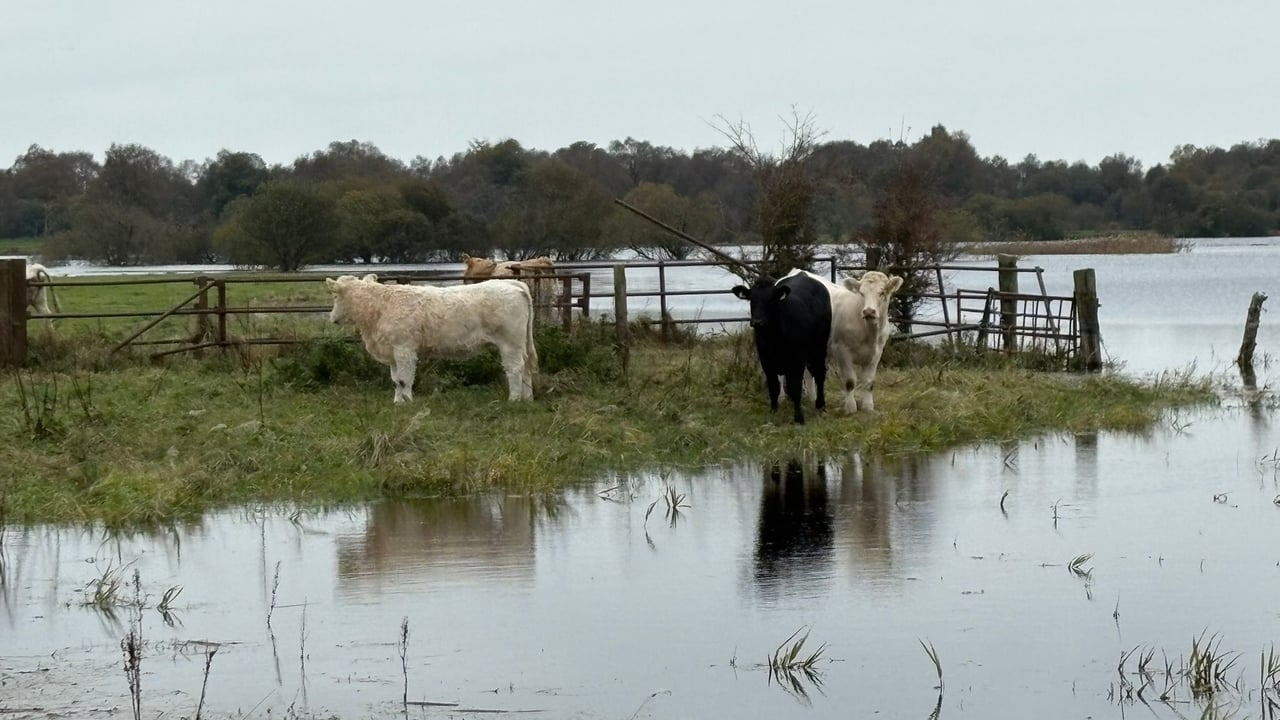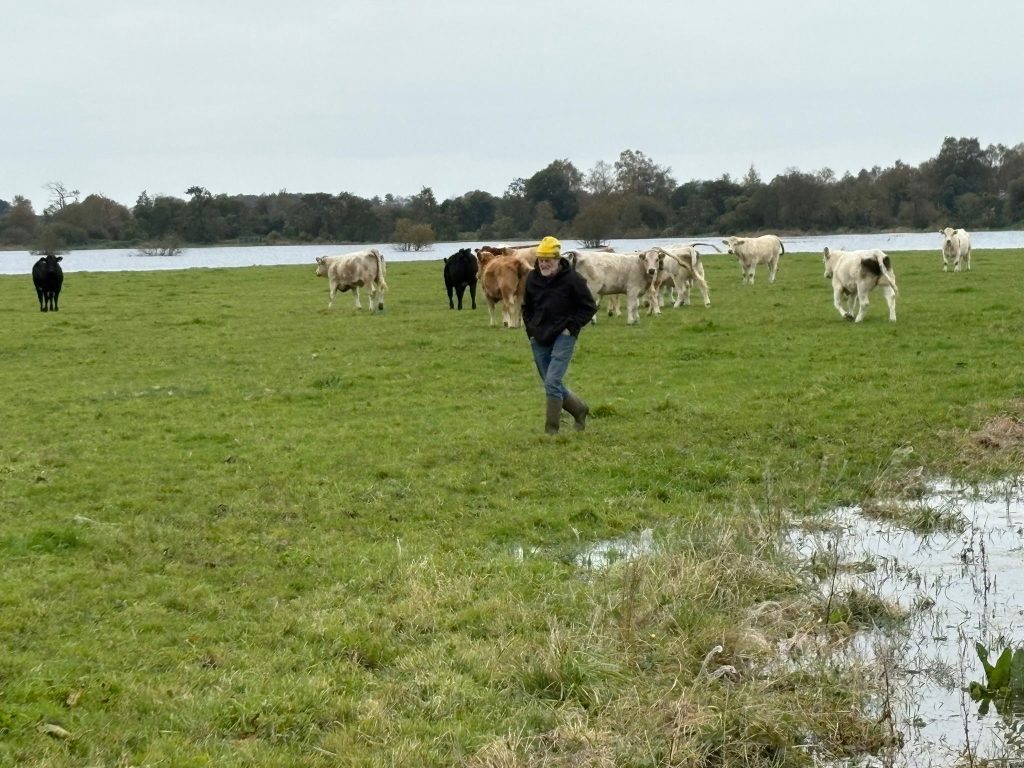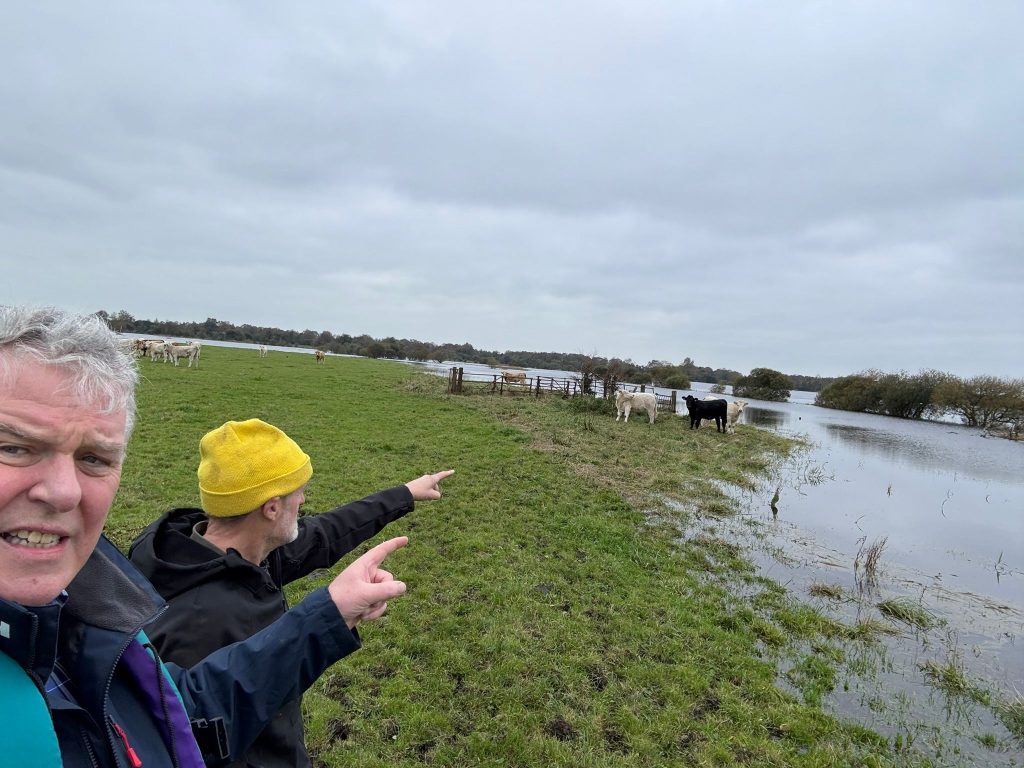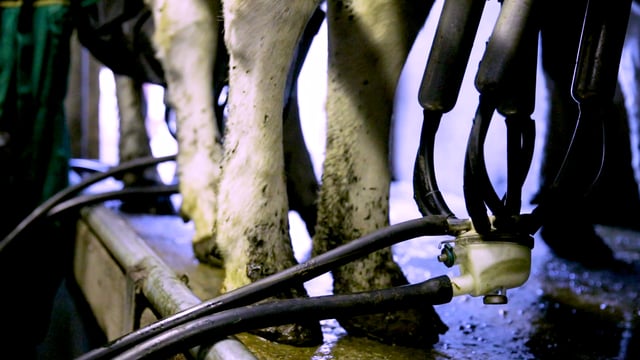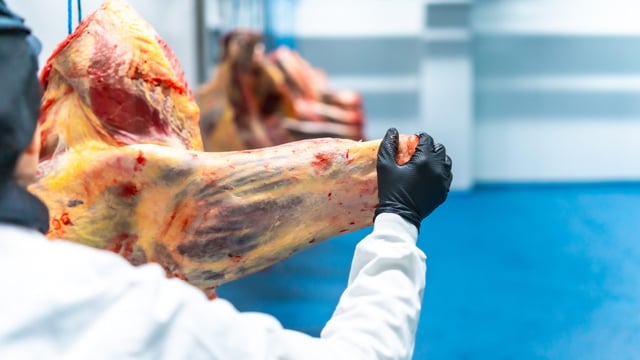Cattle moved to safety after being 'marooned' on Shannon Callows
Most cattle in a group of 26 have been successfully moved to a safer location after being "marooned" on a small patch of land surrounded by flood water on the Shannon Callows.
The cattle were left surrounded by water south of the village of Shannonbridge, at the meeting point between counties Galway, Roscommon and Offaly.
The flooding resulted from heavy rains that occurred in recent weeks, particularly those associated with Storm Amy.
However, although the Shannon Callows floods almost annually, concerns have been raised over the level of flooding at this time of the year, with flooding to this extent not normally seen until closer to Christmas.
Speaking to Agriland about the flooding and the trapped cattle, MEP for Ireland Midlands-North West Ciaran Mullooly said: "I was contacted on Friday morning [October 10] by a number of farmers who own land along the Shannon Callows near Shannonbridge.
"Flooding of the callows is nothing new, and most people will know that we have flooding of the callows practically every year, but what is new is that flooding starts normally in the month of November...So I was surprised, to put it mildly, on Friday morning to get a phone call," he added.
Mullooly was told that 26 head of cattle had been marooned south of Shannonbridge in the callows, and that there was an issue regarding getting them out.
"I travelled down on Sunday morning [October 12]. I met the farmers firstly, in Shannonbridge, around 30 of them had shown up. We sat down for an hour and went through what happened.
"We discussed a number of possible ways of moving the cattle. We were hoping the water levels would go down. The problem with that is, you could have the water on that stretch and it could take normally between eight to 10 days for that flooding to go down if there was no more rain in the area," Mullooly explained.
The farmers involved were waiting on a weather forecast, and if drier weather was promised they may have waited for the water level to go down as the cattle did not seem to be in distress.
However, with no promise of dry weather, the group of farmers decided to make plans to move the cattle before the flooding had subsided.
Mullooly explained: "So 'Plan B' was we went out on the boat, we went down to the land involved and we looked at the location... There were 26 head of cattle... I'd say they were standing on about half an acre of land."
Due to flooding on the road network, rural laneways and adjacent fields, the farmers, using long poles, tried to determine the lowest point of the flooding to see if the animals would be able safety swim to more open ground.
"So what they were doing on Sunday when I was leaving is they were trying to work out where the flood was at its lowest point, and then they were going to try and track a route, and I understand that's what happened," Mullooly said.
"They got five or six sub-aqua club boats and local fishing boats, and they effectively herded the cattle."
"They herded the cattle in a certain direction where they could be fairly confident that the animal would be able to swim effectively across...to get out," the MEP added.
However, it is understood that one animal in the group was not removed at the same time, and had already made its way to a different area of marooned land before the rest were moved.
"And now there's going to be a focus on getting that animal back. There'll be concern about that because that's a much more seriously flooded area," Mullooly said.
Review of legislation
In a subsequent statement, Mullooly called for a "comprehensive review" of legislation governing the management of the Shannon Callows.
He said that some farmland in the area "effectively became islands" with no safe passage for animals or machinery.
He said that local farmers in the Shannonbridge area – a group known as Save Our Shannon (SOS) – have highlighted that long-standing “pinch points” along the river are preventing water from flowing freely, causing unnecessary and worsening flooding impacts.
Mullooly said he is supporting their call for a full legislative review, with the aim of enabling targeted works at these bottlenecks.
"This is becoming a regular feature and increasingly severe problem. There must be a boat available at short notice to help farmers transport livestock off low-lying areas during emergencies.
"But more fundamentally, the way the river is managed must be modernised. We need a clear, coordinated plan involving both the ESB and Waterways Ireland to ensure water flow management does not undermine the viability of farms along the Shannon’s banks," the MEP added.
He said that, with climate change likely to increase the frequency of heavy rainfall events, the current management system and the legislation is no longer fit for purpose, and that legislative change is urgently required to protect farmland adjacent to the shoreline and rural communities.

